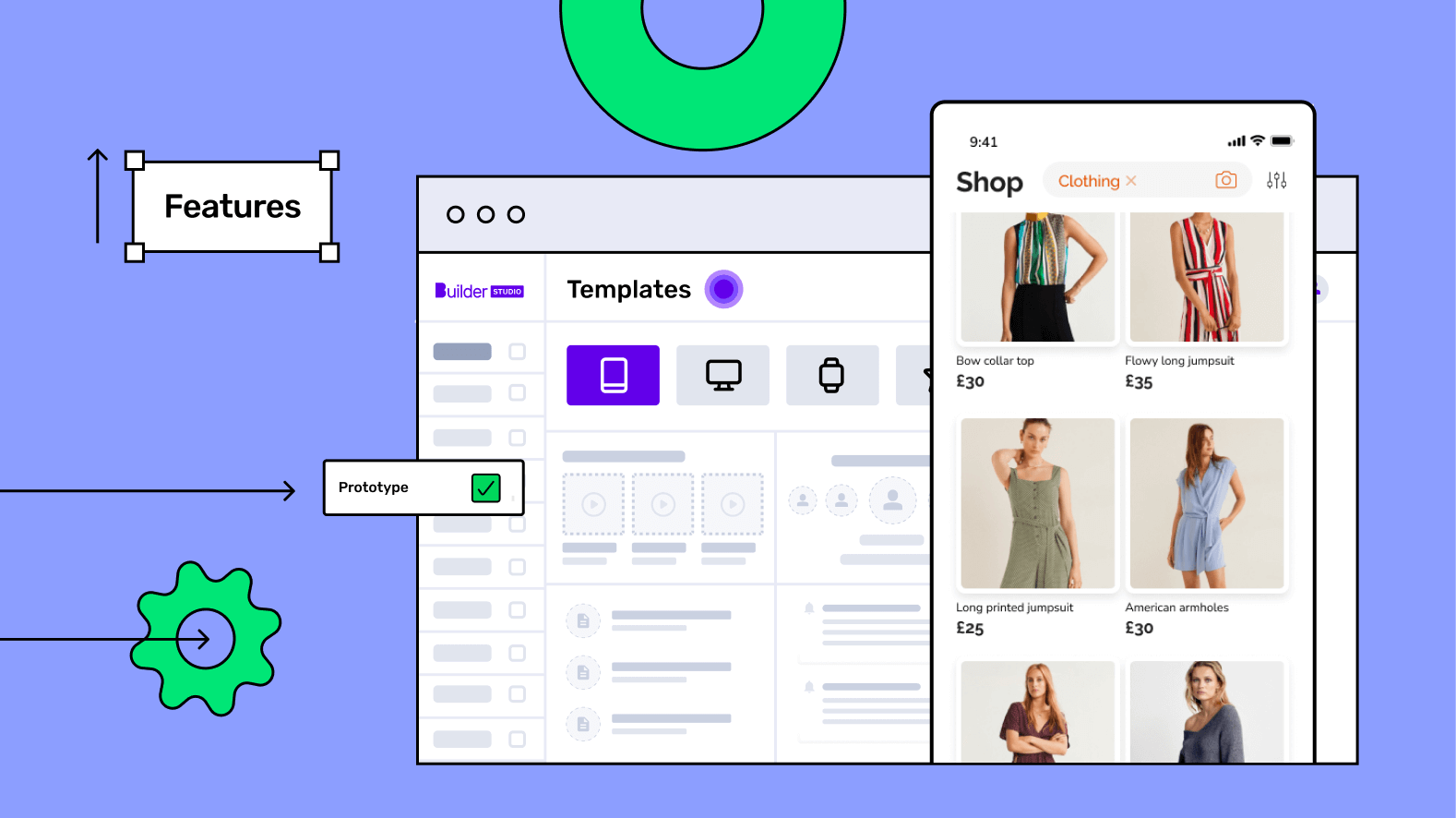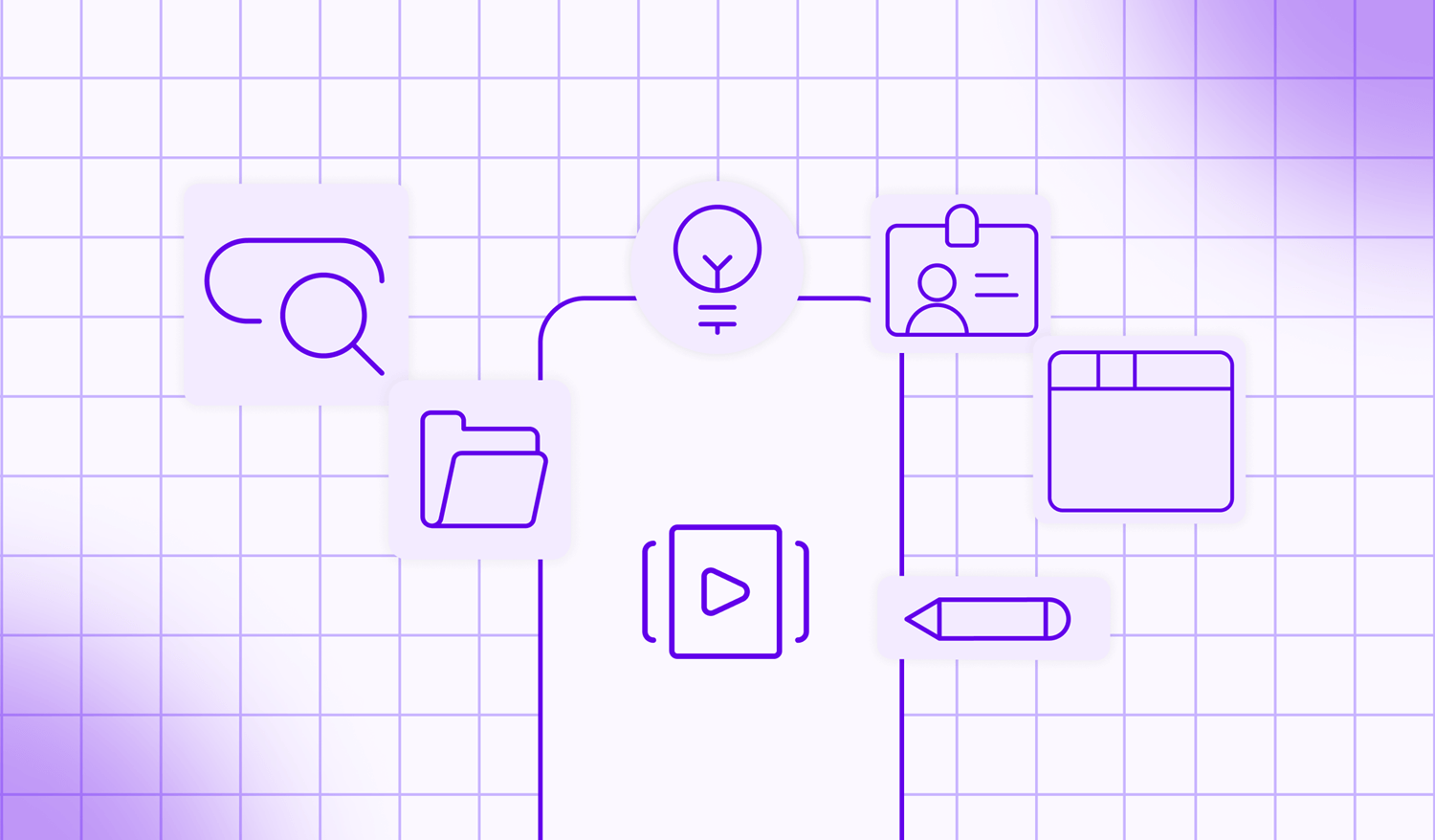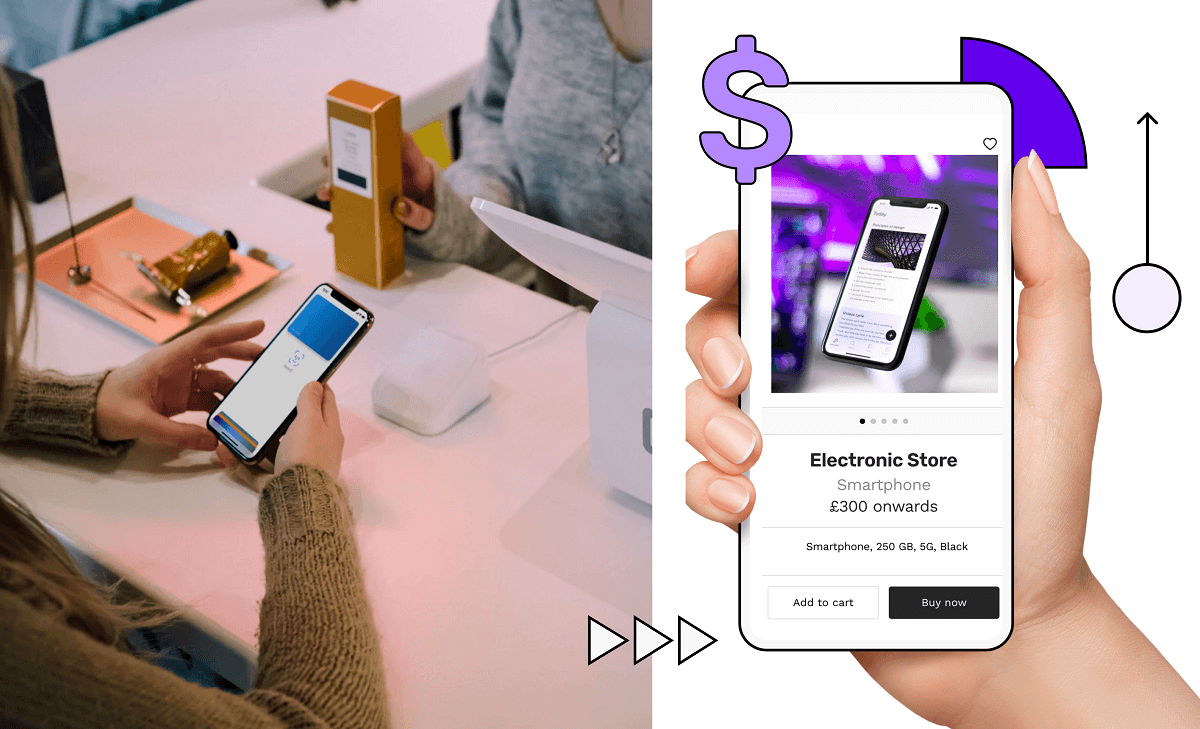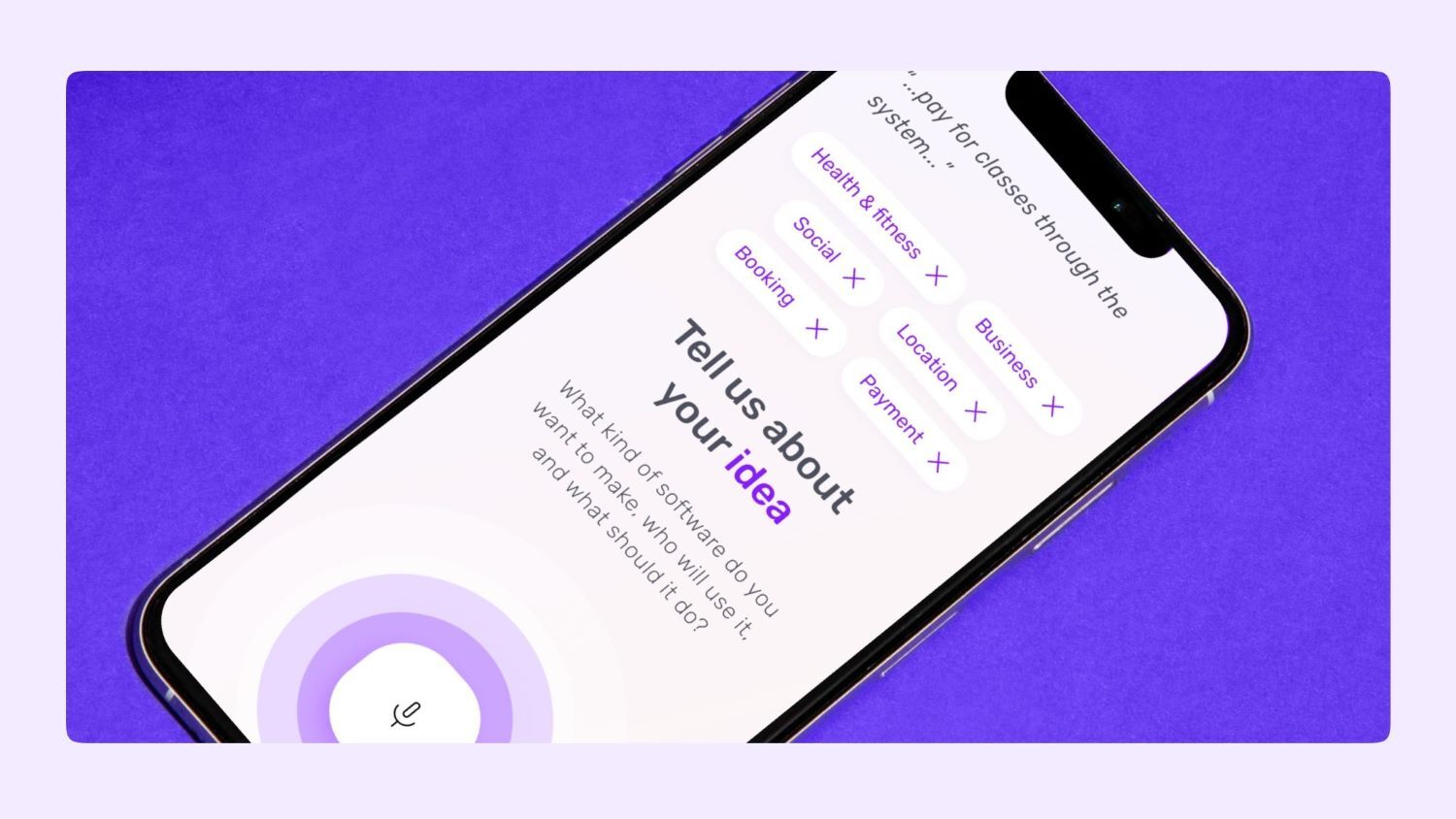An ecommerce app with just a product listing and a shopping cart might have worked wonders in 2016. But in 2024, it won’t help you land sales, even if you offer the lowest prices in the market.
With apps like Amazon, Walmart and eBay at their disposal, customers have become accustomed to the convenient features and flexibility they offer.
Today, if you want to create an ecommerce app or are already running one, you need to stand toe-to-toe with marketplaces and can’t thrive with the bare minimum.
Instead, your app should contain a mixture of essential and advanced features, allowing you to attract users as well as keep them.
To make your life easier, we’ve listed all the app features your ecommerce app should have below.
Let’s dive in 👇
Must-have ecommerce app features
These are the bare minimum features your app should have in today’s day and age.
1 - User friendly navigation
You don’t want your potential customers to abandon your ecommerce app faster than you can say "basket".
That's why having convenient, user-friendly navigation on your ecommerce online store is your first step to success.
This should function exactly as it does when you walk into a physical store:
Everything is easy to find because it's properly labelled and categorised, while there are clear signposts to other related items that maximise your chances of upselling.
Meanwhile, clear and effective calls to action (CTAs) should make it as easy as possible for customers to make a decision, whether this is "add to shopping cart," "request a quote" or "buy now".
If your customers can move through your ecommerce app without any hiccups all the way through to the checkout process, you've got a great chance of them coming back for more.
2 - Search and filter options

Almost all big ecommerce apps provide their customers with search and filter options. Why?
Because 69% of shoppers go directly to the search bar and 80% of shoppers exit because of poor search.
Let's use an example to illustrate this.
Say you sell watches online and your customer is looking for something specific. Their requirements are for it to:
- Be gold plated
- Have a 45mm case size
- Cost up to $300
Instead of asking these customers to find a needle in a haystack, your app should have the functionality to provide them with relevant options that match their intent.
Search navigation bars simply allow customers to type in what they want and filters help them narrow down their choices based on price, colour, size, delivery and more.
Ultimately, search and filter options are like personal store guides that assist your customers in finding their perfect item as quickly as possible and provide a frictionless online shopping experience on your app.
3 - Enhanced personalisation
Creating a tailored, positive user experience for every customer visiting your ecommerce app may be a challenge, but it's one you have to take on.
That's because 80% of users are more likely to buy from a company that offers personalised experiences. To ensure you can tap into this, you need to call on your biggest ally:
Data.
And you'll find a well of it in your ecommerce app that allows you to better understand customer preferences and recommend products to them according to their needs.
After all, every customer treads a different path when it comes to interacting with your brand and personalisation helps you build trust with them at every stage. You could leverage the following tactics to do this:
- Personalised homepages - provide customers with relevant content that's tailored to their interests, enhancing product discovery, saving time and ultimately delivering higher conversion rates
- Personalised coupon codes, discounts and offers - increase customer retention by rewarding repeat customers
- Post-purchase recommendations - introduce customers to relevant and related products to encourage extra purchases
- Personalised emails and reminders - increase customer engagement and conversion by leveraging product recommendation emails and abandoned cart reminders
4 - Push notifications
Have you ever received a notification while scrolling through your social media feed before suddenly realising you’re buying something?
This is how push notifications work, bringing you back to the shopping app where you left off.
Push notifications enable you, as a business owner, to send messages to your users, enticing them to return to the online store with discount codes, promotions or product updates. This feature should be at the top of your list when it comes to adding features to your ecommerce app.
These little messages have become one of the biggest engagement strategies for any app. Well-timed and personalised push notifications can see up to 90% open rates and up to 54% conversion rates.
You can also use them in several ways. For example, you could update your users on the arrival of an order, remind them of the abandoned cart or simply let them know about new deals and promotions.
One thing to remember while leveraging push notifications is that they should be used with care or your users can turn them off altogether. If used correctly, push notifications can deliver value to customers and revenue to your business.
5 - Customer reviews and ratings
Did you know that 93% of customers say that online customer reviews have made an impact on their purchase decisions?
What’s even more striking is that products with 4-star ratings get 11.6 times more orders than those with 3-star ratings.
In online shopping, customers don’t get the ability to touch or feel the products, meaning customers rely on social proof to validate their purchase decisions. And when combined with crisp, well-lit individual product images, your positive reviews and ratings will do a lot of heavy lifting when you sell products online.
This is why encouraging your customers to post their ratings and reviews is so essential.
To ensure they have maximum impact, display product reviews where customers can see them.
Although this might sound daunting, the impact of any negative reviews will be mitigated by your response to them, helping you build your brand.
6 - Order tracking
In the world of endless orders and confirmations, order tracking works as the North Star, guiding your customers on what’s headed where.
Crucially, order tracking provides transparency and visibility to your customers at all stages of their ordering journey – be it order confirmation, packing, dispatch, out for delivery and finally, delivered.
This is a must-have feature for your ecommerce app because 90% of customers want the ability to track orders.
A bonus benefit of this functionality is that it frees up your customer service teams from manually providing updates to customers, helping them focus on more strategic tasks.
7 - Multiple payment options
High shopping cart abandonment rates can be frustrating, especially when 7% of shoppers abandon their carts due to a lack of payment methods.
Cart abandonment can also skyrocket if your checkout process contains friction points like overly long forms, unclear calls to action (CTAs) or limited payment gateway options.
As time is of the essence once your customer adds products to their cart, the best way to increase conversions is to reduce these friction points, offering customers the ability to:
- Checkout as guest
- Pay instantly with Apple Pay, Google Pay or mobile wallets
- Pay with both debit cards and credit cards
Taking these steps will not only increase your revenue by up to 30%, but it'll also be super convenient for your customers as they can complete their purchases without any hiccups.
8 - App analytics
Analytics dashboards provide a birds-eye view of your entire ecommerce sales and operations.
And with access to these kinds of customer and business insights, you can make smart, data-driven decisions that help you scale.
For example, with an analytics dashboard, you can track which products are flying off shelves, which geographies aren’t performing as intended and which products you can provide discounts on.
You can also plan new marketing campaigns and track their impact on your sales while tracking important app metrics like:
- Conversions
- Revenue
- Customer acquisition cost (CAC)
- Average order value (AOV)
- Cart abandonment rate
Want to start your app project with us?
Book a demoSpeak with one of our product experts today.
By proceeding you agree to Builder.ai’s privacy policy and terms and conditions

Innovative ecommerce app features
Listed below are some of the new-age features that your ecommerce app should have. These features not only help your users but also help you generate more revenue by keeping them engaged with your app.
1 - Dynamic pricing
As the name suggests, this feature refers to the real-time adjustment of product prices based on availability, supply and demand and competitor pricing.
Using this feature, you can optimise your revenue by adjusting prices for changing seasons or whenever demand peaks.
Dynamic pricing also helps your users save money as prices go down during the off-season or when supply exceeds demand. They can grab awesome discounts, and in the meantime, you can sell more inventory faster.
2 - Augmented reality (AR)
Even today, many customers hesitate to buy online because they can’t try or experience the product they want to buy. However, many ecommerce apps have solved this problem by leveraging augmented reality (AR).
AR can bring your products to life, where your users can visualise how that jacket or those sneakers look on them by using their phone’s camera. You can do the same for furniture, sunglasses, gadgets, lipstick shades and much more.
AR makes shopping fun and interactive, where your users can zoom in on the product, get a good look from all angles and get a feel of the product like they would in an offline store.
An AR feature also results in fewer returns; in some cases, it could be up to 40% fewer. This is because your customers know what they are buying and will have matched expectations.
3 - Voice and visual search
Picture this:
You’re scrolling through a social media platform and one of your friends has a unique piece of home decor that you want to buy immediately but have no idea from where.
And then you’ve tried to describe that product in plain text, but you’ve still been unable to find it, forcing you to abandon mission.
The same happens with your users too often, which can potentially put them off buying the product altogether.
And you don’t want your users to be sent away because they need to check 18 filters and write a microblog to find a product.
But by giving your users the option to visually or voice search a product, where they can upload an image of the item or ask your app directly for it, you can avoid this scenario. This saves your users from endless scrolling or typing.
With voice and visual search, your ecommerce app becomes smarter, making shopping more convenient and personalised.
4 - Biometric authentication
Almost everyone uses biometric authentication, like FaceID or a fingerprint, to log into their phones. As of 2022, almost 80% of smartphones have biometrics enabled for authentication. This is because they’re an inherently safer and more convenient way to log in than passwords or patterns.
Now, you don’t want your app users to be unable to log in to your app just because they forgot their password. To avoid this, you should allow your users to use their device’s biometric authentication to log in to your app.
This will not only provide them with a seamless login experience but also add an extra layer of security if anyone tries to impersonate their account.
You can also use biometrics to provide a seamless checkout experience where your users won’t have to enter their credit card or payment details every time and can use their biometrics for the same. Ultimately, using biometrics provides mobile users with a speedy, secure and convenient shopping experience.
5 - One-click checkout
No shopper wants to go through the process of filling in personal and payment details twice, especially if they’re regulars on a platform. One-click checkout streamlines the checkout process by making your user’s life easier, resulting in an enjoyable shopping experience.
After all, cumbersome checkout processes can prevent customers from completing their purchases. In this way, one-click checkout increases your revenue as it caters to the spontaneous side of your customers, making impulse buying super easy.
Don’t think of one-click checkout as a mere button; it shows your app’s commitment to providing a frictionless and delightful shopping journey.
6 - Smart reorder
The smart reorder feature has the potential to be one of the most valuable features of your app.
Why?
Because it can help you secure repeat custom and recurring revenue.
If your online store sells fast-moving products that users need after a certain period of time, then you must invest in this feature. This feature is like a shortcut to the products your users buy where they don’t need to browse or search, as it displays everything they need.
This feature learns the buying patterns of users and tailors recommendations based on their preferences, making shopping on your app extremely convenient.
You can further sweeten the deal for returning customers by providing them with discounts and promotions exclusive to smart reorders, encouraging more users to use the feature.
7 - Barcode scanning
If you’re already running bricks-and-mortar stores and want to enhance their in-person, then this feature can be really useful.
With a barcode scanning feature, your ecommerce app will provide users with more information about the product they’re looking to buy.
This feature can come in handy if a shopper can’t find the exact size or colour of the product. They can simply scan the barcode and get to know the availability of the product, meaning they don’t have to ask a sales rep.
Your app can also show products similar to the ones being scanned in case there is no stock available or can suggest if your other stores have that in stock.
With the help of barcode scanners, your app can accept payments online and your customers can checkout without having to stand in the queue.
Conclusion
If you’re thinking of building a new ecommerce app in 2024, then you should definitely implement the above essential features in your app while also including some innovative features.
Using all these features, you can create unique shopping experiences for your customers and keep them returning for more. It’s always a good idea to start with a prototype and design your app in a way that tracks your customer’s journey—from start to finish.
Builder.ai is an AI-powered app builder that allows you to create ecommerce apps without requiring any technical skills.
Working with us, all you need to do is simply share your app idea, and you can get tailor-made apps with 500+ features to choose from as well as infinite customisation options.
Build your ecommerce app by hitting the banner below 👇
Want to start your app project with us?
Book a demoSpeak with one of our product experts today.
By proceeding you agree to Builder.ai’s privacy policy and terms and conditions

Entrepreneurial senior management executive of fast growing technology businesses. Successful in taking ideas from concept to profitability, using a blend of lean, agile and rapid result methodologies. A background in building and managing cross-functional and hybrid teams, with a record for retaining talented individuals and delivering results. Skilled in developing and maintaining a clear product and project vision, strategy and roadmap. Willing and able to adapt to changing environments. Often named as a Crisis Manager with a vision to “Make Things Happen”.













 Facebook
Facebook X
X LinkedIn
LinkedIn YouTube
YouTube Instagram
Instagram RSS
RSS


